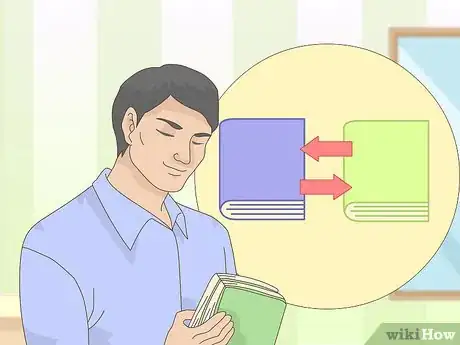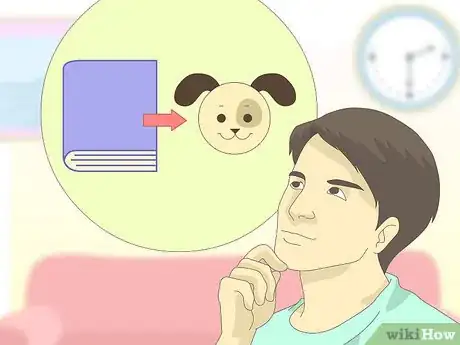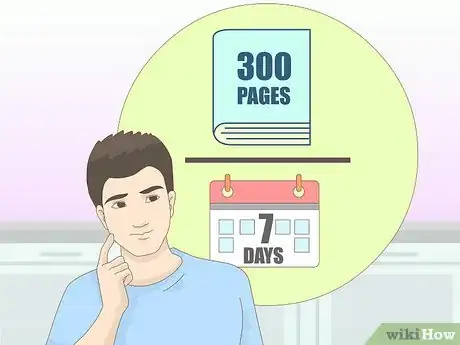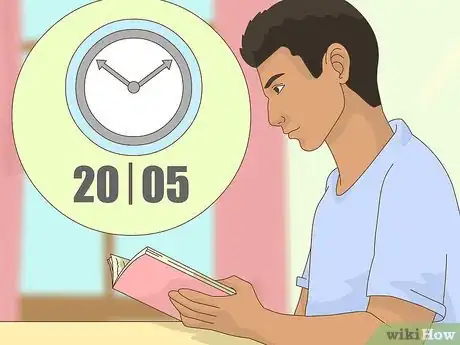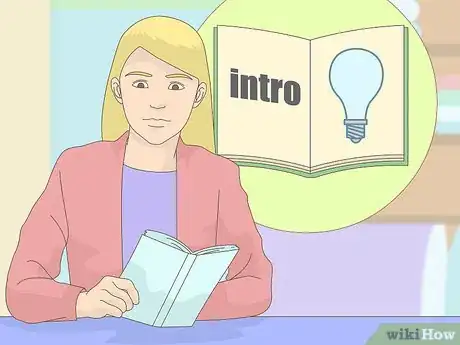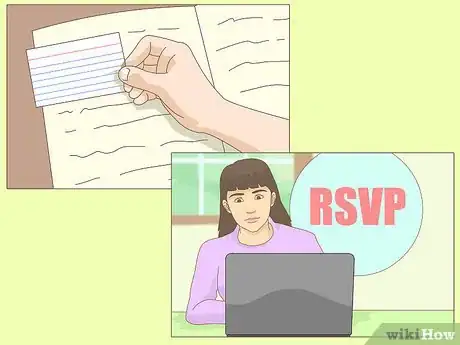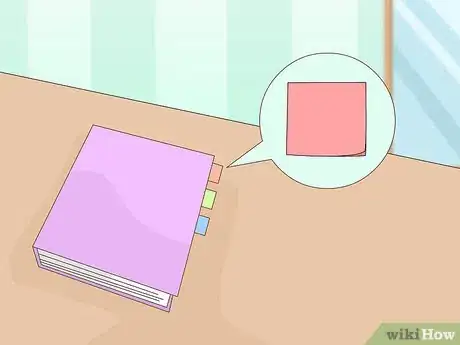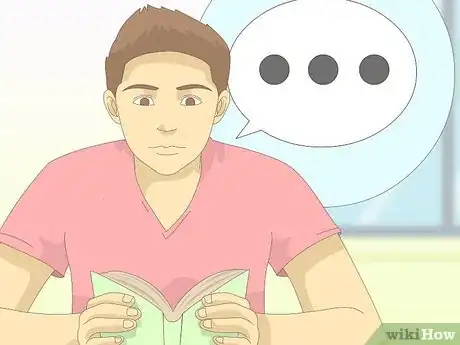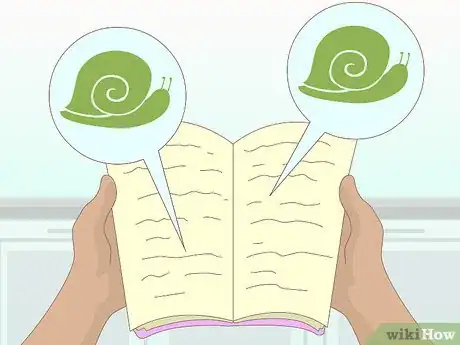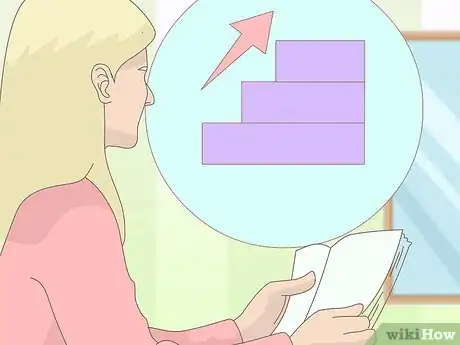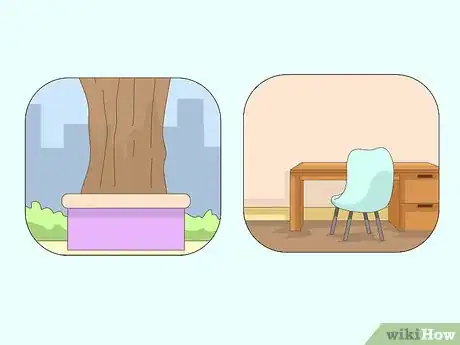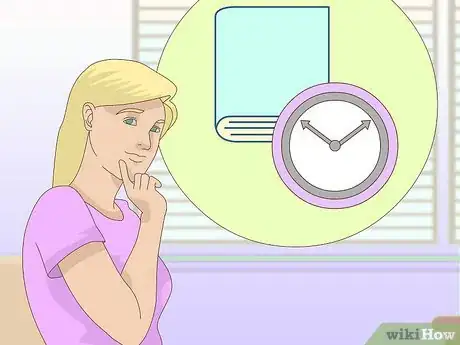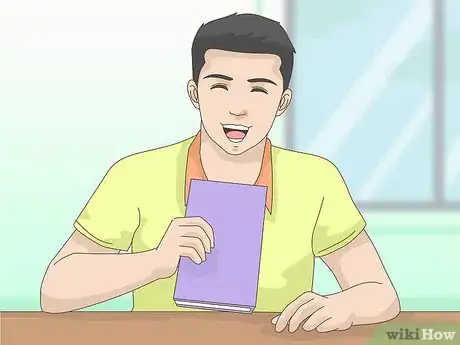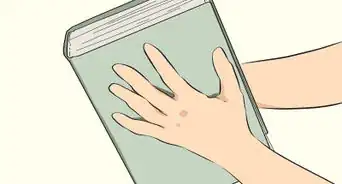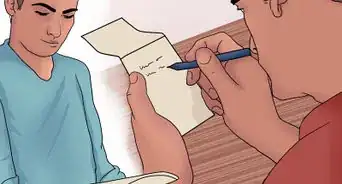This article was co-authored by Michelle Golden, PhD. Michelle Golden is an English teacher in Athens, Georgia. She received her MA in Language Arts Teacher Education in 2008 and received her PhD in English from Georgia State University in 2015.
There are 12 references cited in this article, which can be found at the bottom of the page.
This article has been viewed 47,003 times.
Reading a long book in one week may seem like an impossible task, especially if you are not a big fan of reading. Maybe you have been putting off reading a long book for a class or maybe you just want to read a long book in a week as a personal accomplishment. Whatever your reason, there are several strategies you can use to accomplish your goal of reading a long book in a week.
Steps
Making Assigned Reading More Interesting
-
1Relate what you read to what you know. Reading a long book can be a challenge if you have no interest in the book’s subject. To make reading a long book more fun, try to relate it to something that is familiar to you or at least try to understand the context of the book to make it more familiar.
- For example, if the book is about a love triangle between three fictional characters, try to relate their situation to something that happened to a friend of yours or to the plot of a movie you like.
- Or, if you are reading a book that was written over 100 years ago, do a little research about the author, the year the book was written, and the place where the author lived. This may help to make the book seem more approachable.[1]
-
2Get into a teacher’s mindset. Pretend that you will have to teach someone what you are about to read an
d then read with that in mind. Consider how you would describe a character, event, or concept to someone who has not read the book. This will prompt your brain to remember the material and make it easier for you write or answer questions about the material later on.
-
1Identify questions that you want to answer. If you are reading the book for a class, then you might have a paper or test that will require you to draw on what you have read. Identify the questions that you might have to answer before you start reading. This will make it easier to stay focused and avoid getting overwhelmed by other information.
-
2Visualize what you read. Using visualization can also make reading more fun and help you to remember important information. As you read, pause now and then to imagine what the characters in the book look like, what the setting looks like, or how an important scene might have looked.
- You can also use this strategy to help you remember important dates, names, and other facts as you read. For example, if the book you are reading describes an important battle, take a moment to imagine the scene. Imagine that the date of the battle and other important information about it are stamped onto the image.
Finishing a Book on Time
-
1Determine your time frame. Consider how many hours you can dedicate to reading per day. Take into consideration all of your obligations. Write down your routine to determine how much time you can realistically set aside for reading. Calculate the time you spend:
- Sleeping
- Working
- Attending school
- Doing misc. activities (sports, extra curricular activities, studying, homework, etc)
- Having free time where you will not be reading
-
2Calculate how many pages you have to read. Once you have a dedicated amount of time you have set aside to read, consider how many pages you have to read every day to finish the book by the end of a week. For example, if you have a 300 page book to read in 7 days, you can realistically expect to have to read about 43 pages per day. That is 300 pages divided by 7 days.
- If you want to determine how many pages you have to read per hour using this calculation, divide number of pages per day by hours you expect to read per day. For example, if you plan on reading for two hours a day, that would be 21.5 pages per hour. You may need to spend more or less time reading every day depending on the length of your book and how fast you can read.
- Consider reading as much as you can in the first day or two of the week. Rather than spacing out your reading evenly, you might try to read most of the book in the first two days of the week. This will give you a head start and provide a cushion in case you have to skip a day. For example, if you have a 300 page book to read, try reading 100 pages on the first day of the week and 75 on the second day. Then you will only have to read 125 pages over the next five days.
-
3Remove distractions. You will retain more of what you read and be able to read more easily if you are in a quiet environment that is free of distractions. Some good ways to minimize distractions include:
- Reading in an empty, quiet room.
- Reading in a library.
- Using noise-canceling headphones to create a quiet environment.
- Putting on white noise or soft, non-distracting music to help you concentrate.
-
4Set a timer. It is easy to get lazy and stop reading before you should. If you have a set number of pages to read in a certain amount of time, set a timer for yourself. Force yourself to read until the timer goes off.
- To stop burnout, consider the “20 minutes on, 5 minutes off” method. This is where you set a timer for twenty minutes and force yourself to concentrate without taking breaks. When the timer goes off, let yourself spend five minutes doing something you enjoy (or nothing at all!)
-
5Use a pointer. Studies have shown that readers retain more and read more quickly by using something that points to the text.[2] This allows your eyes to follow along with the text. The simplest pointer to use is the tip of your finger. You can also try:
- Using a ruler and placing it under the line of text you are reading.
- Following along with the point of a pencil.
- If reading an Ebook, setting the font to have a single line of text visible when reading until prompted to a new page.
-
6Read the introductions and the conclusions first. By skimming a text, you can read more in a short period of time. However, you may not retain the information that you read. One way you can retain more and still read quickly is to read the introductory paragraph(s) and conclusion paragraph(s) of each chapter. These should highlight the main arguments and findings of the chapter.
- By doing this, you will also be more likely to understand the entire chapter if you have the key argument/idea in mind while you read.
- In the introduction, look for the author's argument. Generally, an introduction is made up of an attention grabber (usually the first part of the introduction) and then the key argument/thesis statement/research question. This is the sentence(s) you want to look for; it will give you exactly what the author intends to discuss in her writing.[3]
- Similar to the introduction, the conclusion also should contain the author's initial argument. It should also contain some sort of findings or conclusion of key points. It will help to give you a general idea of what the writing is about.
- This technique is mostly used for non-fiction in which you are trying to process information. You can do this while reading fiction, but you might miss character or plot development.
-
7Speed read. This technique requires you to train your eyes to make less movements when reading a page.[4] [5] To learn to speed read, try to:
- Cover text you have already read by using an index card.
- Train your eyes to stop on fewer words by trying to not focus on each individual word.
- Try RSVP (reading rapid serial visual presentation) software. This software will flash a single word at a time on the screen, training your brain to recognize words more quickly.
Absorbing What You Read
-
1Use sticky notes. Using visual markers, like sticky notes, will help you read faster because you will be visually reminding yourself of what you have read.
- You can use these visual cues to mark chapters already read, passages you struggled with, or inspiring quotes.
-
2Annotate your book. Making notes of what you read and how you felt about it is an excellent way to become a faster reader.[6] It forces you to write down your reactions and emotions as you read. You will be more likely to remember what you have read and also make connections to further reading. Some ways to annotate include:
- Highlighting passages you find interesting, intriguing, or important.
- Summarizing chapters/paragraphs to capture main ideas, findings, or arguments.
- Noting reactions/emotions/questions you have in the margins of the book.
- Underlining important words or phrases.
- Writing the definition of unknown or confusing words/concepts.
-
3Subvocalize. Subvocalization is applying silent speech to reading. It may help you read faster because you are not only reading the words with your mind, but also forming the words with your mouth. To practice subvocalization, form each word silently as you read.[7]
- You can do this without moving your lips by pretending to read out loud the text in your mind in a conversational tone, as if you were talking to someone.
- This activity is disputed by scientists. Some say that this is a great way to learn to speed reading, while others argue that it actually slows down the reading process. Give this technique a try to see if it works for you.[8]
-
4Slow down at certain parts. While your first instinct may be to read as fast you can to finish the book, you probably will not retain a lot of what you have read this way. Instead, when you come to an interesting or important part of the text, slow down your reading. Try to internalize what you are learning. This will help your reading speed in the long run as it helps with comprehension.
- The more you read, the more you will learn to recognize "important" parts of the text. For example, you may want to slow down when reading the introduction in order to really comprehend the material.
-
5Practice! Just like anything in life, reading quickly takes practice! If you want to try to increase your read speed, try to calculate how many pages you read per minutes. Then, try and beat your personal record. Just make sure you are understanding what you read!
- Try and read more for pleasure to naturally increase your reading speed.
- Time yourself when reading when you aren't under a deadline. Push yourself to read a set number of pages faster. Set goals for yourself.
- Avoid getting frustrated when reading. If you think you read too slow, the worst thing you can do is get frustrated and quit. Instead, keep at it! You will improve over time.
Reading for Pleasure
-
1Find a quiet spot. To really “sink into” a good book, you must first find a comfortable spot. Try different locations around your home to see what relaxes you the most. Try some of these spots:
- A quiet, infrequently used room.
- A sunny spot outside.
- In the bath.
- The living room on your favorite couch.
-
2Avoid reading in bed. If you sit in bed and try to read for pleasure, you might make yourself so relaxed you will fall asleep. Avoid reading right before bed as you will teach your body that reading means that it is time to sleep.[9]
- Furthermore, reading on a backlit screen (like an ereader, phone, or tablet) may make it harder to fall asleep![10]
-
3Schedule time for reading. Just like having to read for an assignment, you should also schedule yourself to read for pleasure. Sometimes, it is easy to occupy yourself with work and other activities. Look at your daily or weekly schedule and block out a space that is just dedicated to reading. This will also assuage any guilt you might feel by reading for fun rather than accomplishing something else!
- Try blacking-out or writing on a calendar that you intend to read. This will give a visual reminder to you and anyone trying to schedule appointments with you. [11]
- For example, on a calendar, mark out a day and time you want to spend reading. Pick a day of the week, like Tuesday, and an hour you are free, say 12-1pm, and commit yourself to reading each week at that hour.
-
4Commit. If you enjoy reading, do not let it become something you give up because something else comes up. If you have scheduled time to read, then read. If you are having a stressful day and would rather do something else, force yourself to read for a short period of time. Chances are, it will help to de-stress you and help calm you down.
- By committing yourself to reading, you will more likely read more and more quickly.
- Scientists suggest that it takes 21 days to break or build a habit. Try and a keep consistent reading habit for 21 days to ingrain reading as a daily habit.[12]
Community Q&A
-
QuestionCan I annotate a novel I read for pleasure?
 Community AnswerYes, you can. After you have read the book a few times and truly understand it, you can start annotating it.
Community AnswerYes, you can. After you have read the book a few times and truly understand it, you can start annotating it. -
QuestionIs it better if I read a book online or get a copy of one for myself?
 Community AnswerGet a real copy of it because you might get distracted on a digital device (social media could be a distraction) and stop reading it.
Community AnswerGet a real copy of it because you might get distracted on a digital device (social media could be a distraction) and stop reading it.
References
- ↑ https://www.psychologytoday.com/us/blog/reading-minds/201511/does-reading-matter
- ↑ https://learningcenter.unc.edu/tips-and-tools/taking-notes-while-reading/
- ↑ https://www.shsu.edu/academics/education/journal-of-multidisciplinary-graduate-research/documents/2016/WhittenJournalFinal.pdf
- ↑ https://positivepsychology.com/mindfulness-exercises-techniques-activities/
- ↑ https://www.psychologytoday.com/intl/blog/tip-the-tongue/201407/reading-fast-and-slow
- ↑ https://www.readwritethink.org/classroom-resources/lesson-plans/teaching-student-annotation-constructing
- ↑ https://www.k12academics.com/educational-psychology/subvocalization#.VunfvvkrKUk
- ↑ https://www.apa.org/ed/precollege/psn/2013/09/learning-secrets
- ↑ https://www.scientificamerican.com/podcast/episode/avoid-back-lit-reading-before-bed/
